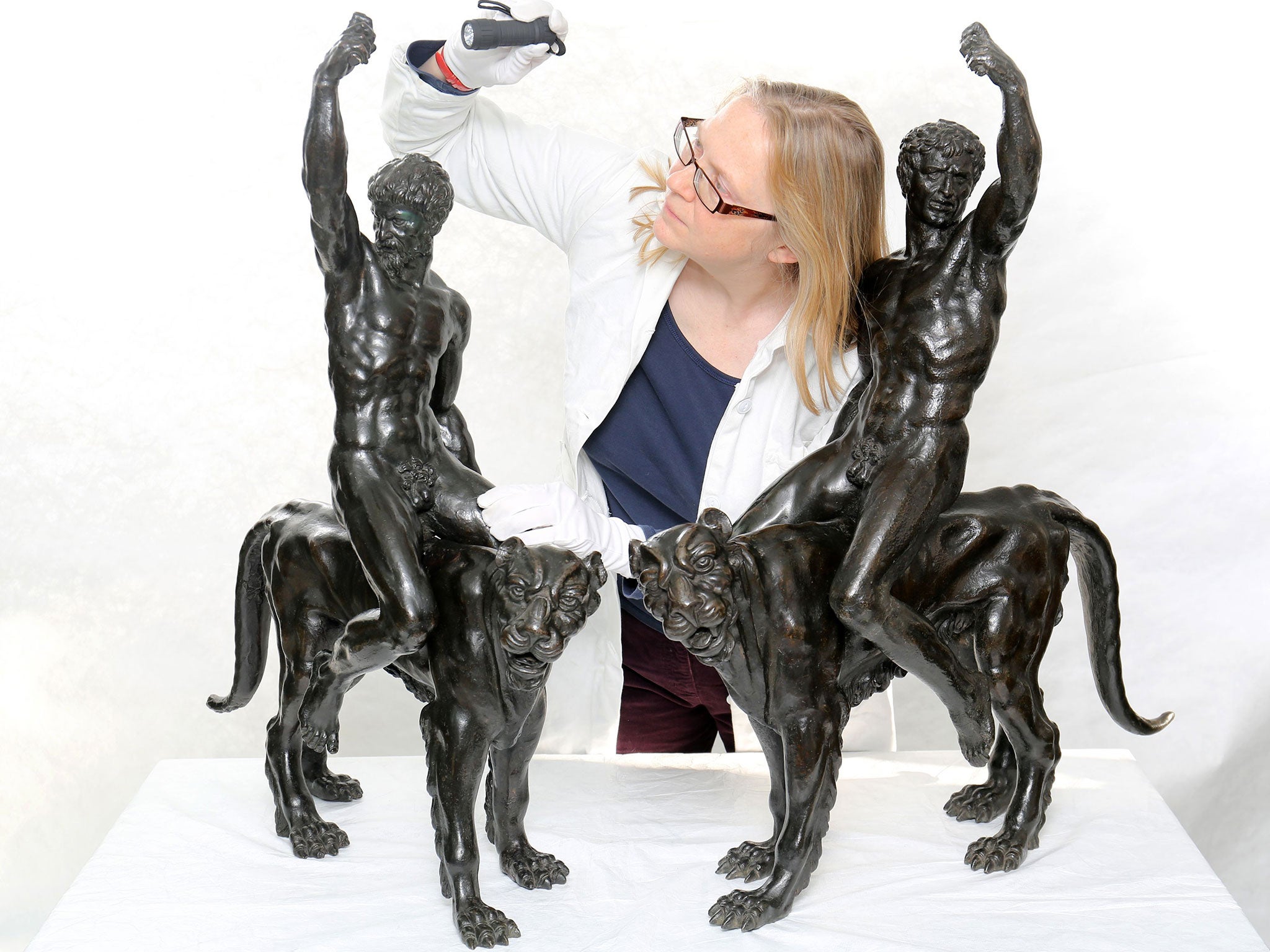Bronze statues of naked men riding panthers could be Michelangelo's only surviving bronzes
Artist is thought to have cast them shortly after his completion of the marble sculpture David and before painting the Sistine Chapel

Your support helps us to tell the story
From reproductive rights to climate change to Big Tech, The Independent is on the ground when the story is developing. Whether it's investigating the financials of Elon Musk's pro-Trump PAC or producing our latest documentary, 'The A Word', which shines a light on the American women fighting for reproductive rights, we know how important it is to parse out the facts from the messaging.
At such a critical moment in US history, we need reporters on the ground. Your donation allows us to keep sending journalists to speak to both sides of the story.
The Independent is trusted by Americans across the entire political spectrum. And unlike many other quality news outlets, we choose not to lock Americans out of our reporting and analysis with paywalls. We believe quality journalism should be available to everyone, paid for by those who can afford it.
Your support makes all the difference.Depicting naked, muscular men riding triumphantly on two ferocious panthers, a pair of bronze statues have long been revered in the art world for their homoerotic beauty. Yet the experts were missing one crucial fact: the artist who created them.
New evidence suggests the pair of metre-high masterpieces, which have languished in relative obscurity for more than a century, are in fact the lost works of Michelangelo – making them the only bronzes made by the renaissance master known to survive.
Researchers from Cambridge University and Fitzwilliam Museum believe they have pinpointed the statues to his early output, shortly after his completion of the marble sculpture David and before painting the Sistine Chapel.
The statues were first claimed to be the work of Michelangelo while in the collection of Adolphe de Rothschild in the 19th century, but they are neither documented or signed and the theory was dismissed.
But a breakthrough came last autumn after Paul Joannides, emeritus professor of art history at Cambridge, connected them to a drawing by one of Michelangelo’s apprentices, copying his tutor’s work.
In one corner is a composition of a muscular youth riding a panther, similar in pose to those of the bronzes, and drawn in the same manner that Michelangelo used while sketching designs for his sculptures.
The bronzes were compared with other works by Michelangelo and found to be very similar in style to his works of 1500-1510, a date range confirmed by initial X-ray analysis.
The inference is that Michelangelo was working up this unusual theme for a work in 3D, say the researchers.
Dr Victoria Avery, of the Fitzwilliam Museum, Cambridge, where the sculptures are set to go on display today, said: “The bronzes are exceptionally powerful and compelling works of art that deserve close-up study – we hope the public will come and examine them for themselves and engage with this ongoing debate.”
The team is due to present its conclusion in July.
Join our commenting forum
Join thought-provoking conversations, follow other Independent readers and see their replies
Comments